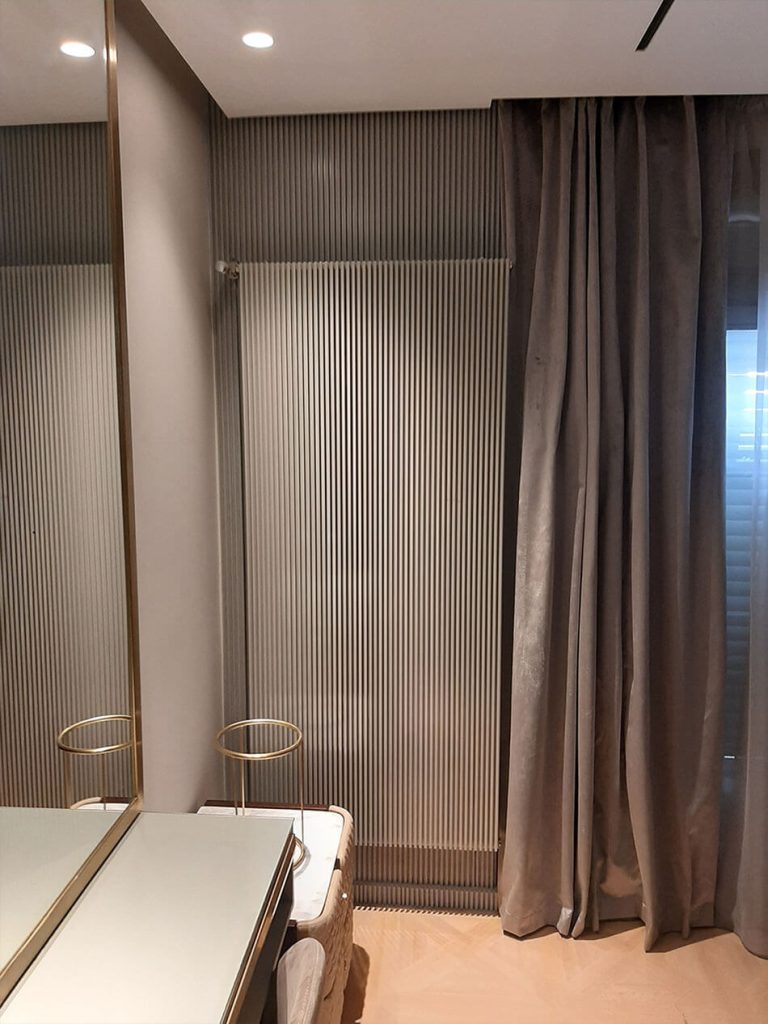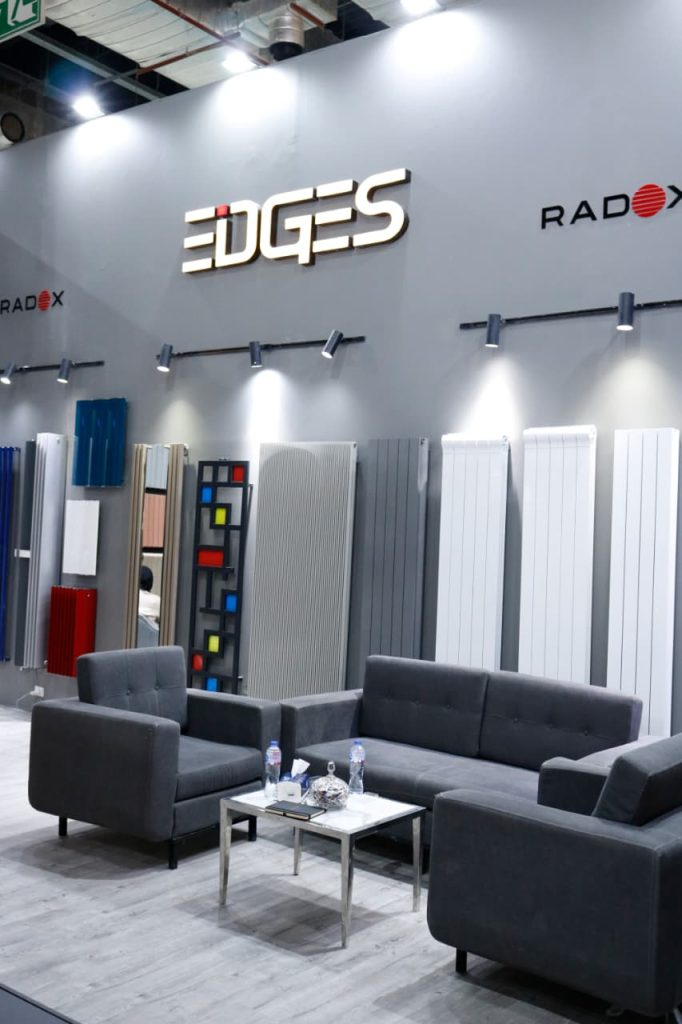The Rise of Designer Radiator Systems in Egyptian Luxury Interiors
In Egypt’s most coveted residential enclaves — from the stately villas of Giza to the opulent compounds of New Cairo and the landmark developments of the New Capital — a new design paradigm is emerging. The modern luxury home is no longer a static showcase of high-end furnishings and imported marble; instead, it is a carefully choreographed environment where form and function, technology and aesthetics, sustainability and lifestyle converge. In this context, the radiator — once a utilitarian afterthought — is being reimagined as a vital touchpoint in the journey towards truly luxurious living.
Today’s discerning Egyptian homeowners demand more than just warmth from their heating systems. They seek designer radiator systems that harmonize with bespoke interiors, deliver eco-friendly performance, and elevate the sensory experience of home life. For interior designers, architects, and developers in Egypt, this intersection of luxury heating Egypt, architectural vision, and client aspiration presents exciting possibilities — and substantial challenges. The integration of radiators as aesthetic and functional elements has become both an art and a science, requiring close collaboration between designers, clients, and radiator specialists.
The Artful Fusion of Radiator Design and Interior Design: Creating Luxurious, Cohesive Living Spaces in Egypt’s High-End Market
Radiator Design Trends in Luxury Interiors
The Designer Radiator Revolution
Long gone are the days when the radiator was an unsightly hunk of metal tucked beneath the window. The past decade has witnessed a revolution, transforming radiators into statement pieces that embody the essence of contemporary luxury. Today’s designer radiator systems range from sculptural centrepieces and slim vertical panels to color-pop and mirrored models that double as art installations or spatial dividers.
Key 2025 Radiator Design Trends:
- Anthracite and Matte Black Finishes: These sophisticated, earthy tones dominate the trend charts, pairing beautifully with minimal, industrial, or nature-inspired palettes.
- Vertical Radiators: Growing in popularity for their space-saving properties and dramatic lines, vertical radiators are ideal for Egyptian villas with grand ceilings or compact modern spaces.
- Sculptural, Statement Designs: From geometric forms to wave-shaped brass models, statement radiators blur the line between function and fine art, reflecting homeowners’ personalities.
- Industrial Chic: Brushed metals, raw finishes, and classic column radiators meld with exposed brick or natural wood, referencing both heritage and urban contemporary styles.
- Custom Color and Finish: Whether the aim is bold contrast (mustard yellow, sage green) or subtle coordination with wall treatments, color-matched radiators allow unlimited creative freedom.
- Dual-Purpose and Integrated Storage: Heated towel rails for bathrooms and bench-style or shelf-integrated radiators add both convenience and intrigue to interior spaces.
The cumulative effect of these trends is a shift from hidden to highlighted — radiators are now embraced as essential components of interior design, shaping as well as supporting the mood, flow, and luxury of high-end Egyptian homes.
Integration of Radiators as Aesthetic Elements
Radiators as Focal Points and Seamless Complements
Modern radiator technology allows designers to transcend traditional placement and integration rules. Instead of being limited to under-windows or behind doors, designer radiators can be:
- Showcased as a living room focal point with bespoke shelving or lighting
- Installed vertically in hallways for a striking, space-efficient accent
- Concealed within storage units or integrated as room dividers for open-plan layouts
- Crafted in glass, mirrored, or colored finishes to reflect light and create a sense of space in smaller apartments or luxury bathrooms.
For the interior designer, this opens up a world of possibilities. Radiators can be chosen to match, contrast, or define aesthetic narratives — blending seamlessly with the wall color in a minimalistic New Cairo penthouse, or creating a bold sculptural element in a Giza villa’s grand entrance.
Material Innovation: Beyond Steel and Cast Iron
The expansion of available materials further enables design flexibility:
- Aluminum Radiators: Lightweight, highly conductive, and easy to mold into custom shapes, making them ideal for rapid heating and intricate designs.
- Stainless Steel and Glass: For ultramodern, reflective, and corrosion-resistant installations.
- Cast Iron or Vintage Columns: For classic, vintage, or heritage-inspired interiors demanding visual depth and high heat retention.
This diversity empowers both designers and homeowners to achieve a truly bespoke look — from opulent and traditional to avant-garde modernity.
Role of Interior Designers in Radiator Selection
The Designer as Curator and Collaborator
Interior designers working in Egypt’s luxury housing market act as both aesthetic curators and technical project managers when it comes to radiator selection. Their responsibilities include:
- Early Integration: Considering radiator options at the architectural stage, not as an afterthought, to ensure compatibility with overall design themes, spatial flow, and client needs.
- Balance of Form and Function: Selecting models that deliver both the desired heat output (measured in BTUs) and visual harmony with flooring, wall treatments, light fixtures, and furniture.
- Collaboration with Engineers: Coordinating with mechanical, HVAC, or radiator specialists to ensure installation feasibility, optimal placement, and system performance — critical in large villas or homes with specialized requirements (e.g., underfloor heating compatibility, hybrid systems).
- Client Education: Guiding clients through the options for bespoke heating solutions, emphasizing not just aesthetics but energy efficiency, sustainability, and future maintenance considerations.
The most successful designers thrive on this interdisciplinary process, weaving their creative vision seamlessly with technical constraints to deliver both comfort and design excellence.
The Process: Design to Installation
A typical progression might include:
- Spatial and Visual Analysis: Reviewing architectural plans, analyzing sunlight, insulation, and traffic flow.
- Heat Requirement Calculations: Collaborating with engineers or suppliers to determine ideal radiator type and size for each space.
- Material and Finish Selection: Matching or contrasting with specified décor elements.
- Prototype Visualization: Using 3D renderings or design software to demonstrate placement, style, and color options to clients.
- Technical Assessment: Confirming compatibility with planned heating systems, boiler capacity, smart controls, and zoning.
- Supplier Engagement: Sourcing from local manufacturers or international brands based on project brief and lead times.
This rigorous, collaborative process is essential for creating truly cohesive, luxurious living spaces in the premium Egyptian housing market.
Collaboration Between Designers and Radiator Specialists
Why Collaboration Is Essential in Luxury Projects
In Egypt’s high-end real estate developments, especially in Giza, New Cairo, and the New Capital, the complexity of homes demands more than just an off-the-shelf solution. Large villas, multi-zoned living spaces, double-height ceilings, and unique architectural layouts create thermal and aesthetic challenges that must be addressed by both designers and technical experts.
Best Practices for Collaboration:
- Joint Site Visits: Designers and radiator specialists tour the property together to identify optimal placements and discuss system integration options.
- Integrated Design Workshops: Regular meetings to align on technical parameters (pipe runs, insulation, energy sources) and review samples or finish swatches.
- Mockups and Prototyping: Creating on-site or studio mockups of radiator models within the actual room setting, allowing design tweaks before installation.
- Ongoing Communication: From initial design through post-installation maintenance, ensuring a consistent luxury experience for the client.
This approach transforms radiators from potential eyesores into assets, delivering both energy efficiency and visual harmony.
Energy Efficiency and Sustainable Heating Solutions for Egyptian Luxury Homes
The Need for Energy-Saving Heating in Egypt’s Contemporary Luxury Market
Egypt’s climate is defined by hot, arid summers and chilly winters, with higher energy demands in increasingly insulated and expansive luxury homes. Luxury villas in Giza, New Cairo, and the New Capital now typically feature advanced insulation, double-glazed windows, and increased glazing, all of which impact the thermal performance of heating systems.
Key Market Drivers:
- Residential sector consumption climbed to nearly 38% of Egypt’s entire electricity usage, making energy-saving measures crucial for both cost and environmental impact.
- Simulation studies suggest that optimizing energy use through integrated heating, insulation, and smart controls can cut both energy use and emissions by up to 40% in modern villas.
- Buyers in Egypt’s luxury market increasingly value future-proofed, eco-friendly living environments that align with global trends as well as local cultural preferences.
Innovative Energy-Efficient Radiator Technologies
Modern radiator systems offer a host of technologies to support sustainability and comfort:
- Smart Thermostats & Zoning: Allow individualized room-by-room control, adapting heating intensity to occupancy, time of day, and lifestyle, yielding up to 30% energy savings.
- High-Efficiency Condensing Boilers: Achieve 90-98% conversion rates, significantly reducing both fuel consumption and emissions compared to legacy systems.
- Radiators: Lightweight, quick to heat, and recyclable —models are both eco-friendly and efficient, perfect for contemporary Egyptian homes.
- Solar Water Heating: Solar water heating systems, championed by Egyptian firms like Intersolar Egypt and Edges Heating, leverage long hours of sunlight for hot water, slashing fossil fuel dependency. Payback periods are as short as 3-5 years, far outperforming many global markets.
These solutions are especially attractive in Egypt’s premium market, where buyers expect both sophisticated comfort and sustainable credentials.
Radiator Heating Solutions in Egyptian High-End Residential Design
What Makes a Radiator System “Bespoke”?
In the world of luxury interiors, “bespoke” signifies more than just a unique color or style; it means a system thoughtfully engineered to the specific thermal profile, interior mood, and spatial dynamics of each residence. Bespoke solutions may include:
- Custom Sizes and Shapes: Radiators tailored to fit non-standard spaces, curved walls, or distinctive architectural details, as is often the case in luxury Giza or New Capital villas.
- Unique Materials and Finishes: Hand-finished aluminum, stainless steel, colored glass, or even sculptural forms that evoke high art.
- Dual-Function Features: Integration of storage, seating, or architectural lighting, especially in open-plan or multi-use luxury spaces.
- Color and Rhythm Coordination: Customization to match Farrow & Ball, Dulux, or high-end Egyptian palette tones — achieving a perfect visual blend.
Manufacturers like Zehnder and The Radiator Company, for instance, offer full-bespoke services, crafting “engineered-to-order” radiators for even the most challenging interior concepts.
Collaboration Pathways: Designers, Architects, and Artisans
A typical bespoke project in New Cairo might begin with a concept render, advance to technical review with the radiator supplier, and culminate in a locally manufactured or imported product finished to match the client’s vision. Interior design studios may partner with craftsmen to fabricate unique covers, shelving, or integration details — ensuring that the heating element fuses flawlessly with furniture, lighting, or wall design.
The Result: Distinctive, High-Value Residences
Bespoke radiator integration:
- Enhances both property value and market differentiation
- Delivers superior thermal performance and comfort
- Acts as a centrepiece for design storytelling in marketing materials, showrooms, and private commissions
Core Design Considerations Versus Radiator Features in Luxury Interiors
| Design Consideration | Radiator Feature | Luxury Market Benefit |
| Visual Harmony & Integration | Customizable colors, finishes, and shapes; vertical/horizontal/mirrored options | Aesthetics matched to décor, seamless integration with interior |
| Energy Efficiency & Sustainability | High-efficiency boilers, smart thermostats, zoning, solar heating compatibility | Reduced utility costs, green living, alignment with global trends |
| Space Optimization | Slimline, vertical, or dual-purpose radiators; bespoke sizing | Maximizes usable area, supports open-plan layouts |
| Personalized Comfort | Zonal heating, smart controls, adaptive thermostats | Custom temperatures for each room and lifestyle |
| Heritage & Character | Vintage column radiators, artisan finishes, integration with classic motifs | Evokes tradition, supports restoration and resale value |
| Maintenance & Longevity | Corrosion-resistant materials, easy-clean/accessible design | Durability, hassle-free ownership |
| Technological Sophistication | Wi-Fi/app connectivity, remote diagnostics, integration with smart home systems | Premium experience, modern luxury appeal |
| Safety & Child-Friendly Design | Low surface temperature radiators, concealed/hybrid systems | Suitable for family homes, peace of mind |
| Local Climate Adaptability | High-output aluminum or panel radiators, adaptability for seasonal variations | Effective for Egyptian winters and transitional weather |
Each point on the table shows how the combination of design ideas and new radiator technology directly affects how easy it is to use, the style, and the property’s value over time. These are all important things for people looking to buy luxury Egyptian housing.
The Future of Radiators in Egyptian Luxury Interior Design
The transition from a functional radiator to a sculptural centrepiece symbolises a significant evolution in Egypt’s high-end housing market. This evolution reflects the demand for integrated, luxurious and sustainable living solutions. In Giza’s heritage villas, the elegant compounds of New Cairo and the futuristic developments of the New Capital, radiators are no longer disregarded elements. Instead, they are vital, expressive and high-performance features in the evolving tapestry of home life.
Designers who like to think outside the box are working with radiator experts and using the latest energy-saving technology to change how these homes look and feel. It’s now clear that when designer radiator systems are planned as a key part of the interior design, every penny spent brings more than just comfort and efficiency. It also brings a nice look that won’t go out of fashion and a higher price when it’s time to sell.
Hey there, if you’re a property developer, designer, or homeowner looking to add that extra touch of luxury to your project, why not think about making the radiator a central feature of your design? Instead of just an afterthought, think of it as a key component in achieving that perfect balance of luxury, innovation, and comfort.


